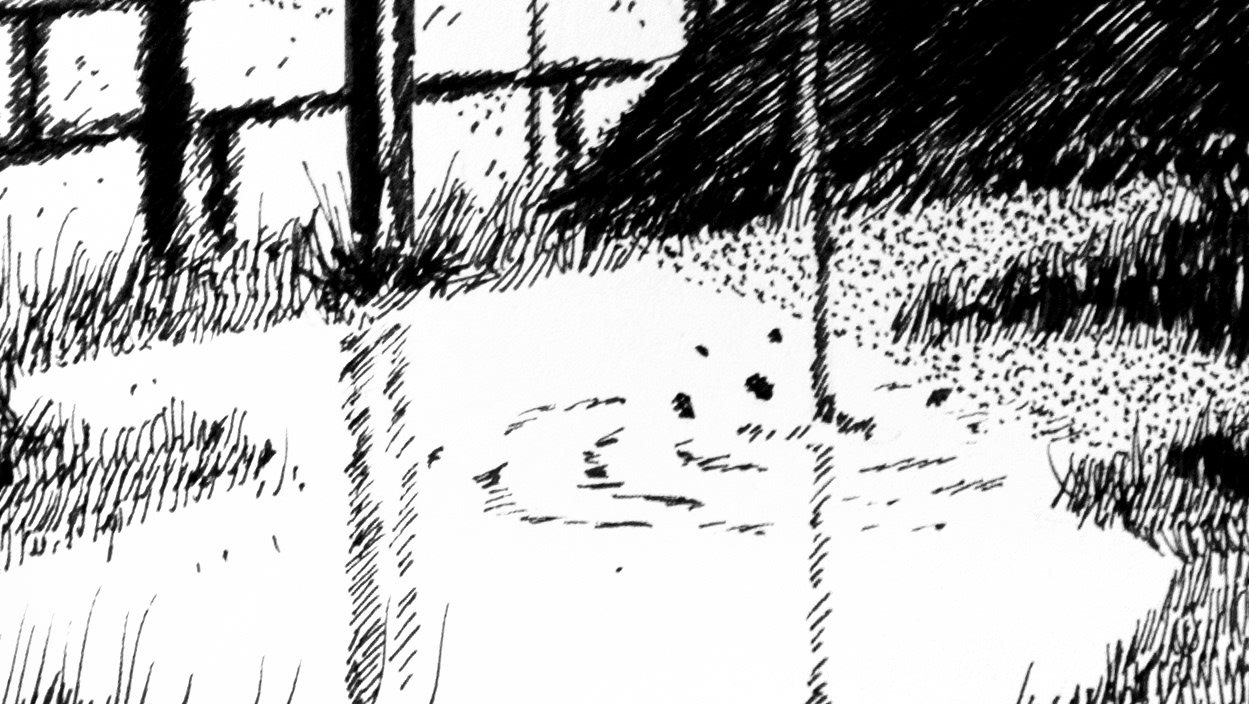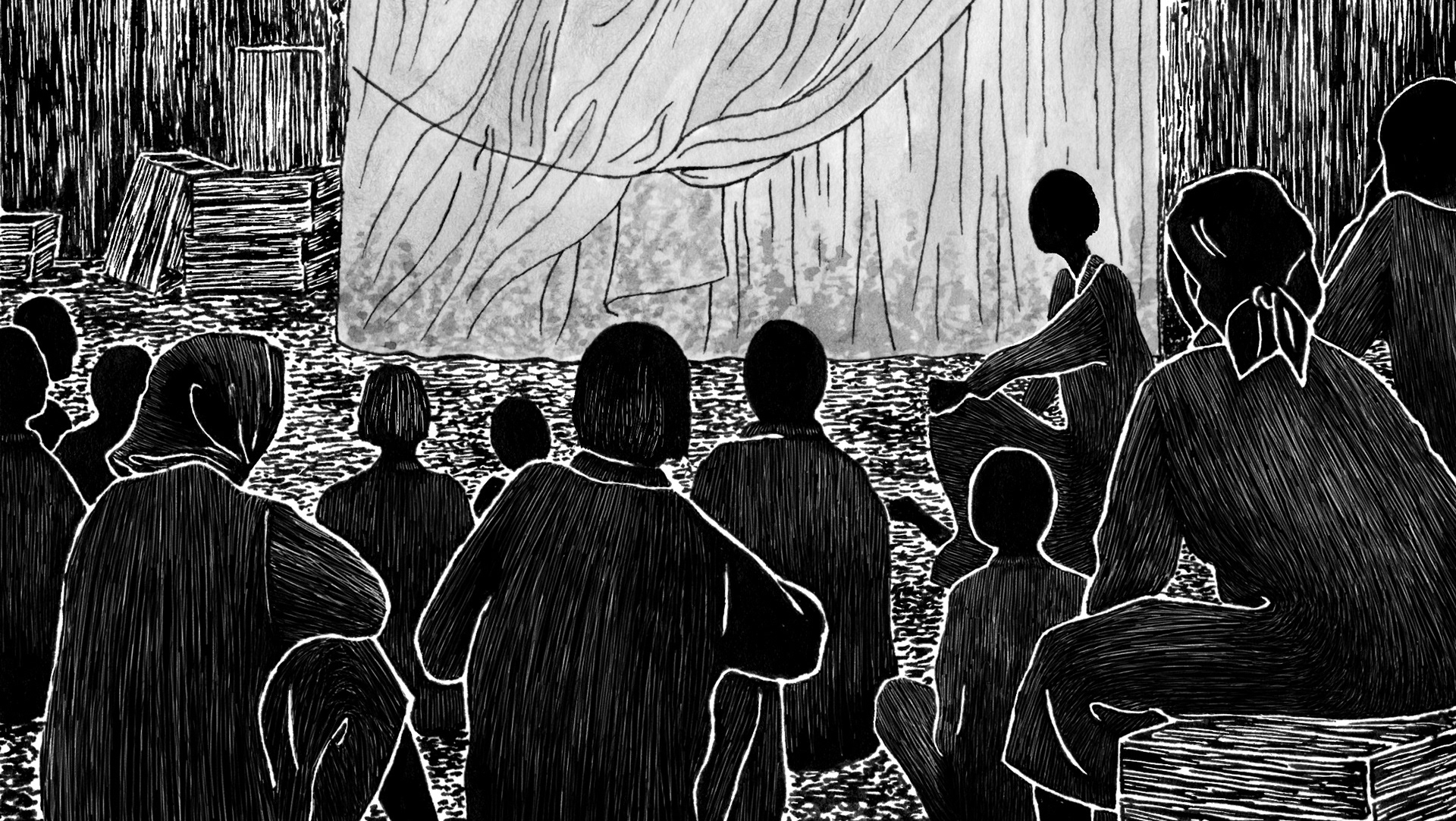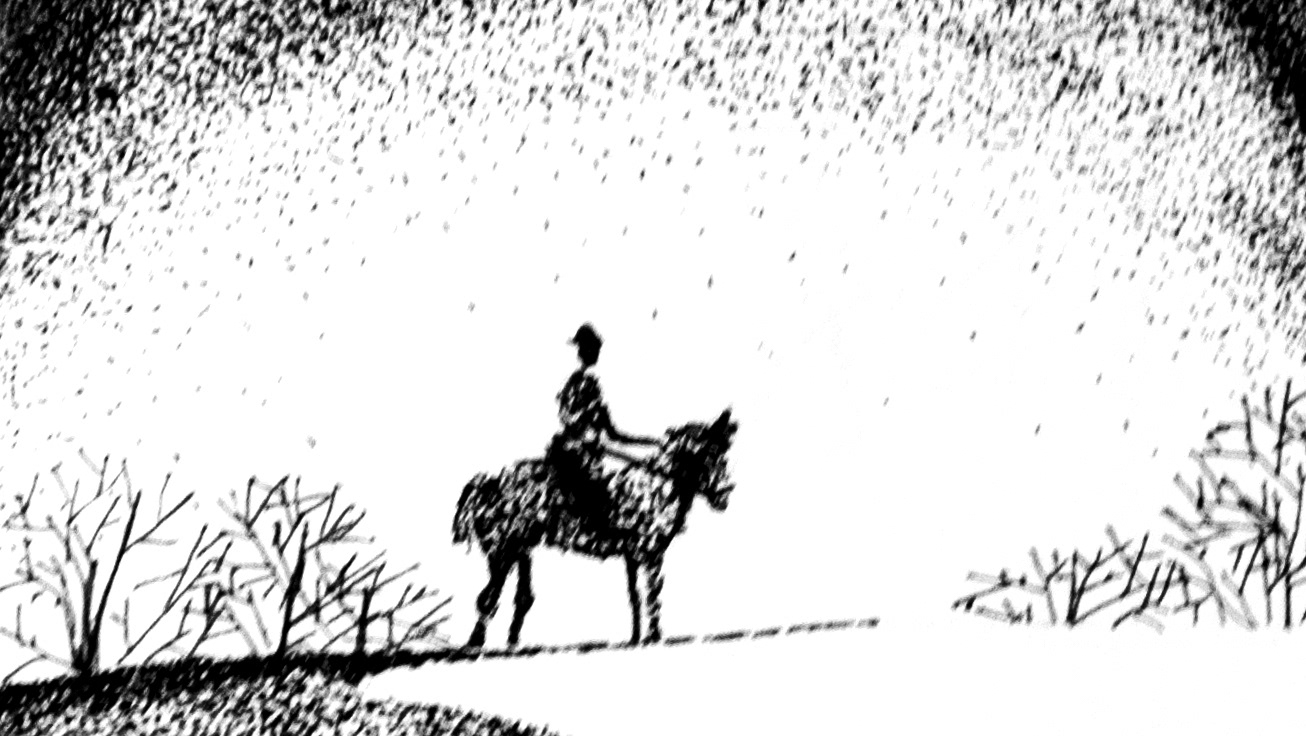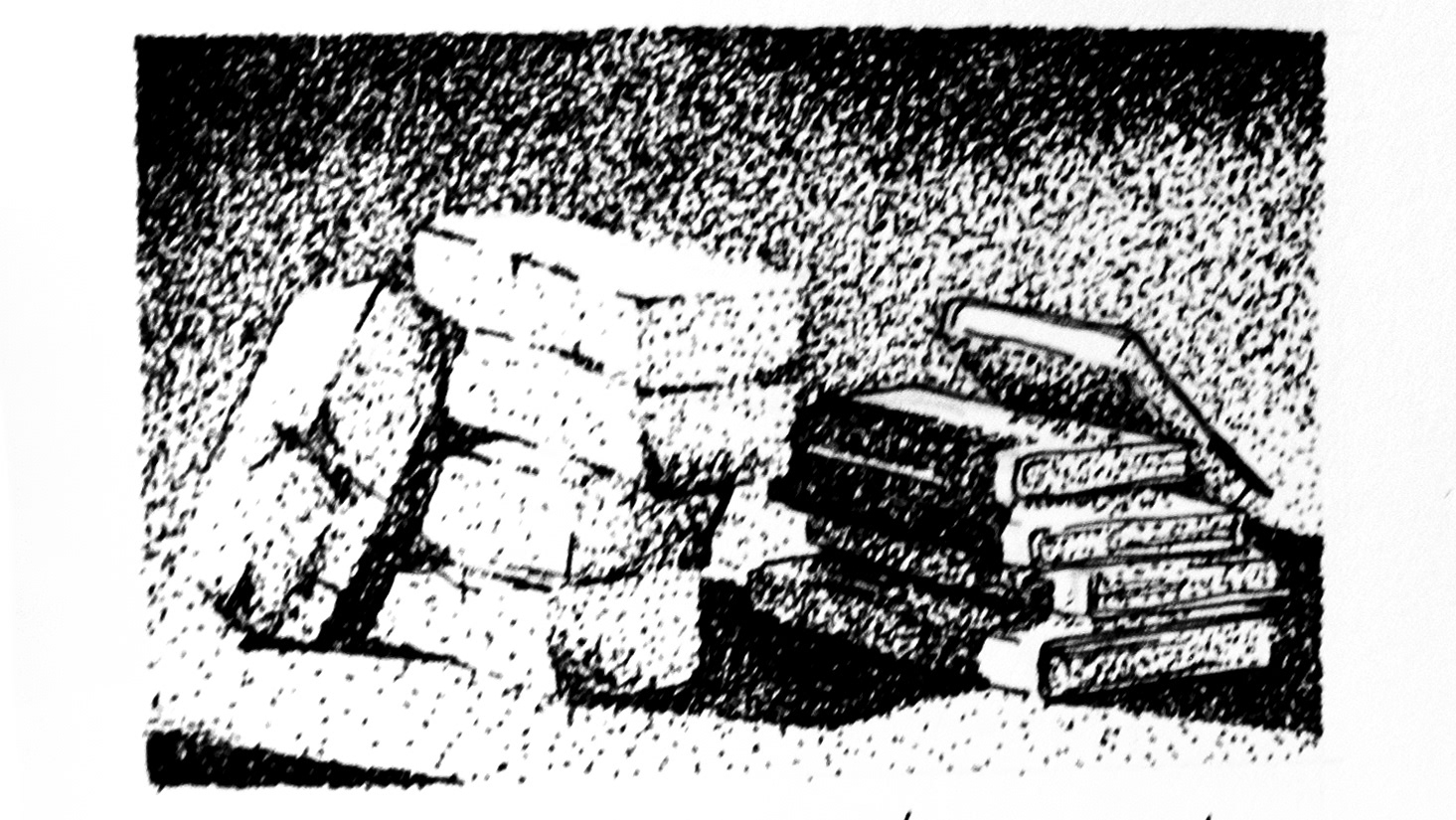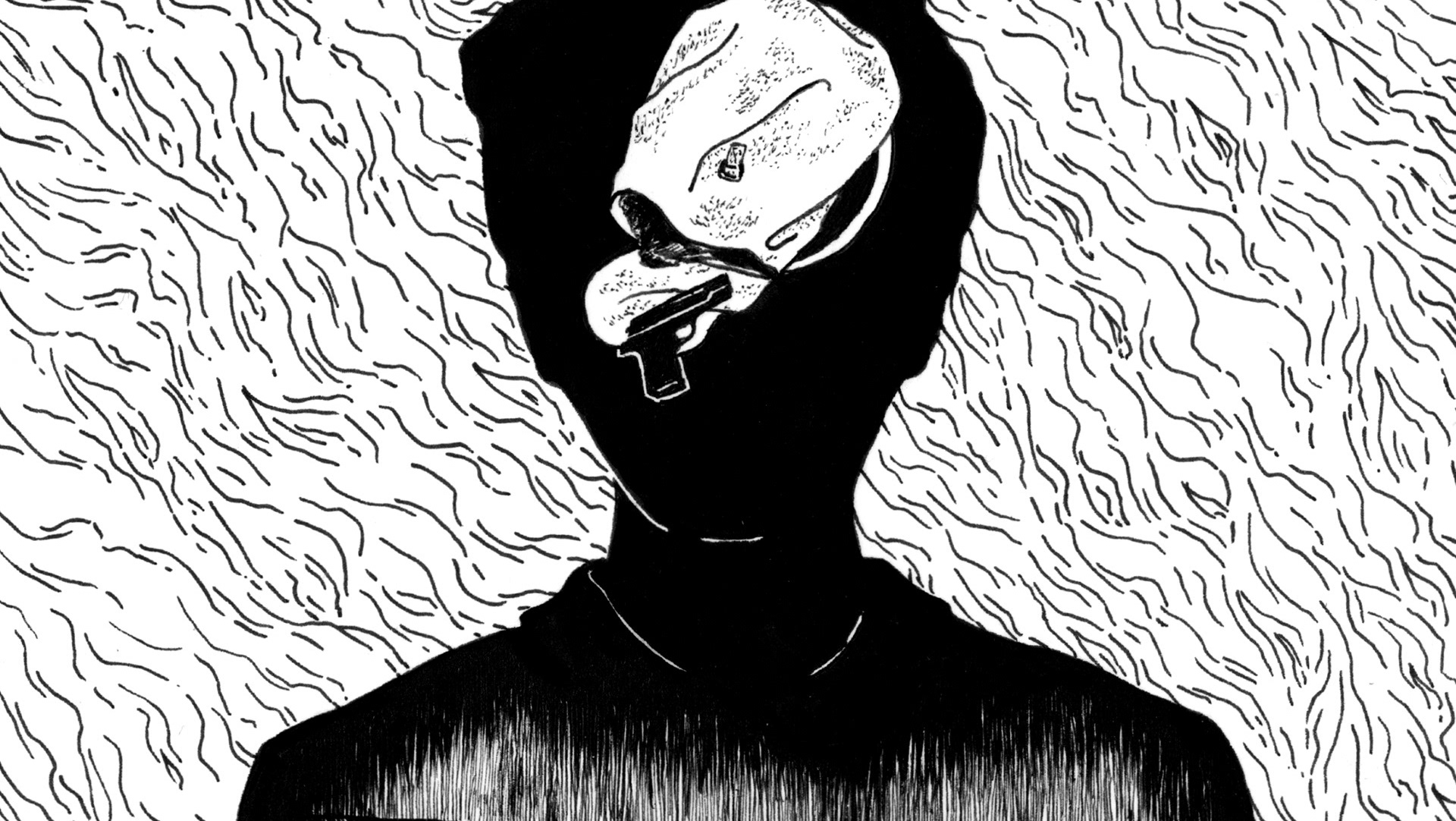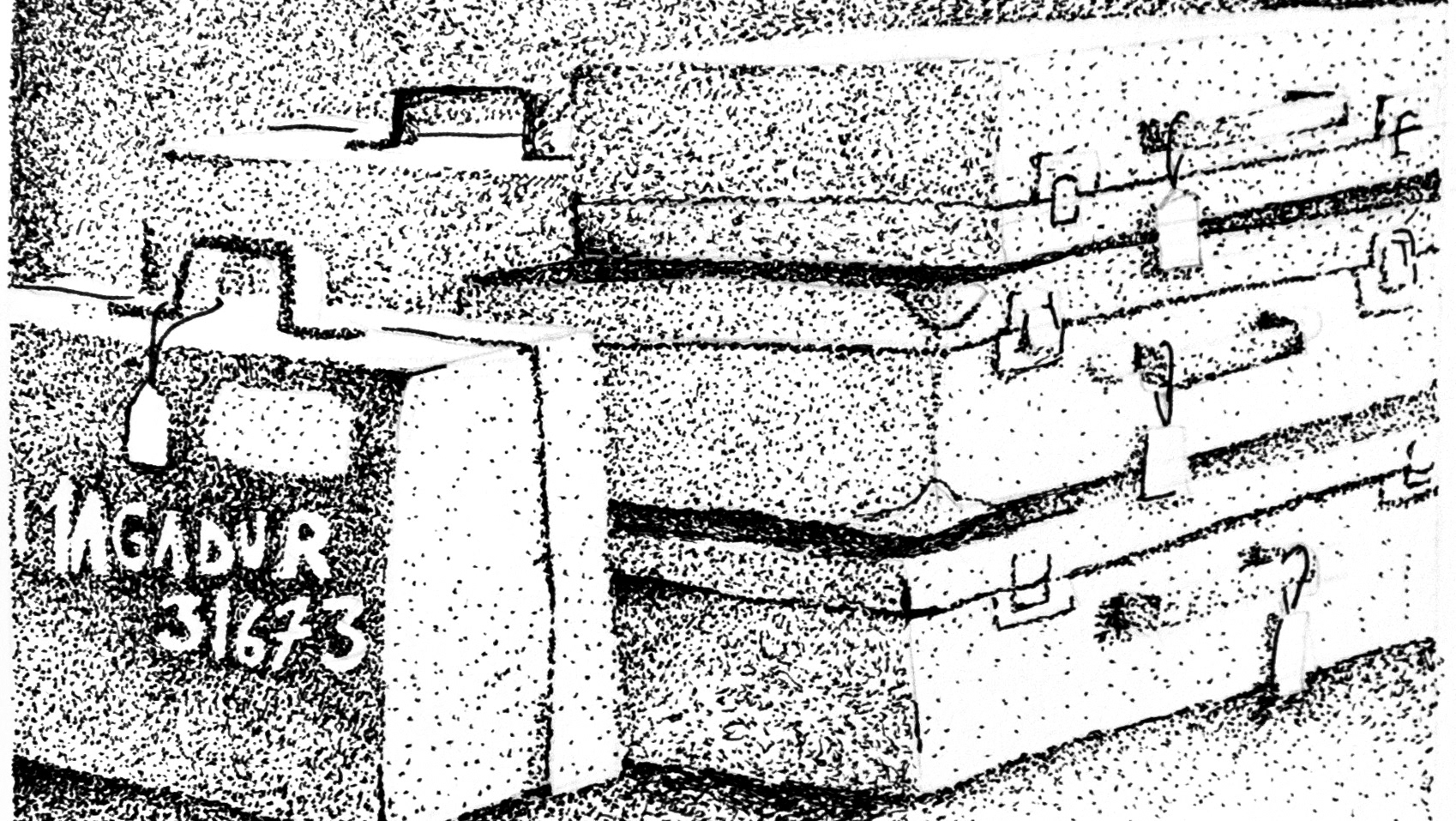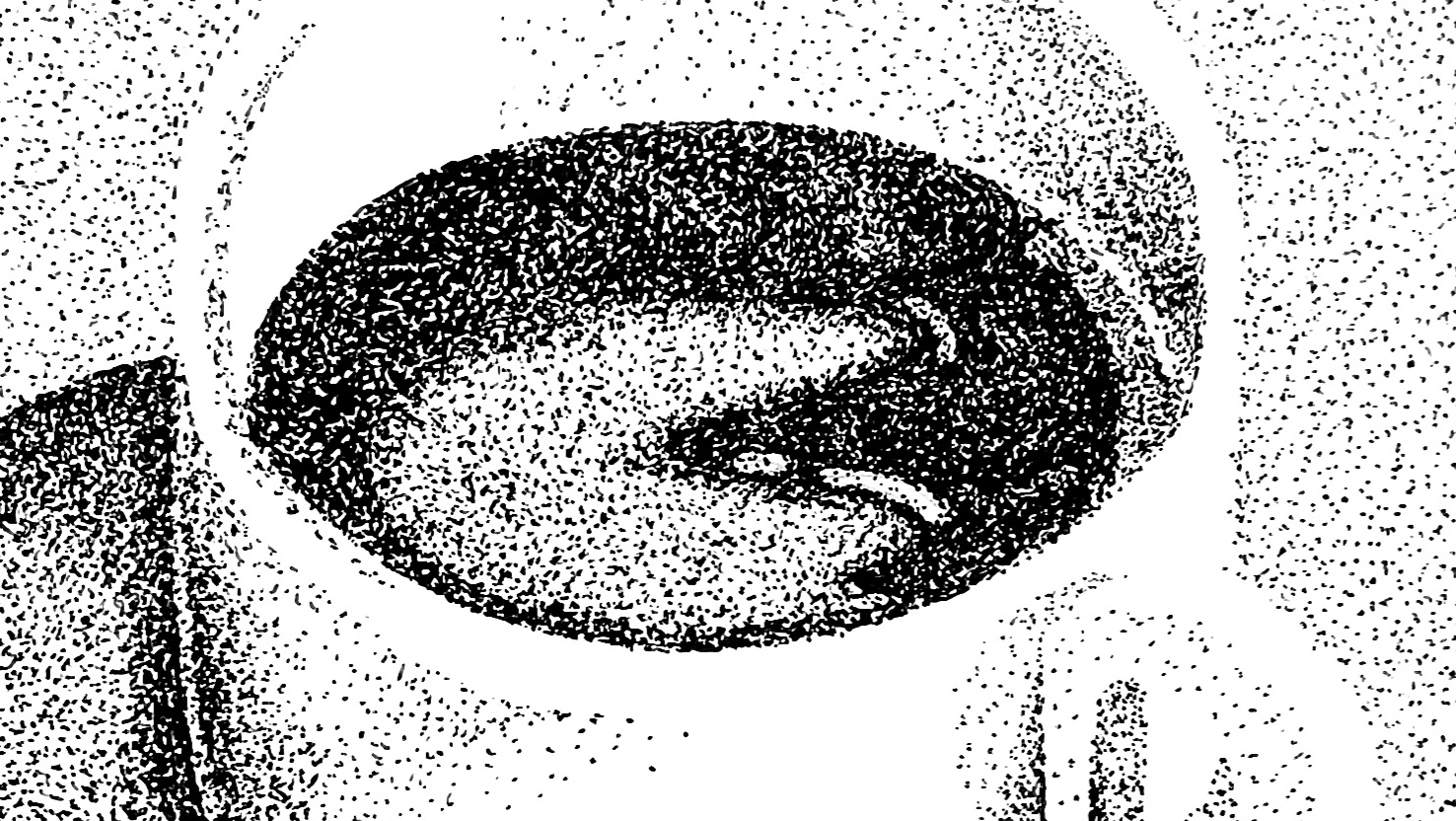An illustration from Marion Lefebvre
Today is the 21st of March 1945, in the Amstetten train station. Charlotte Decock and a few 31000 look up and watch american planes flying above their heads.
The war is coming to an end, they can feel it.
They just need to hold a little longer.
Back in october 1942, Charlotte Decock's husband escaped from Beauvais' prison. He was a resistant, and he considered escaping an opportunity worth taking. As retaliation, the gestapo simply arrested Charlotte, at her work, as a hostage.
When he learnt the news, her husband wanted to turn himself in, but his family reasoned him. He would be executed right away by the gestapo or the french police. As for Charlotte, they would never do such harm to her. So he decided to run away and left his wife in the hands of the police, their 2 children in the hands of Charlotte's sister.
They didn't execute Charlotte, they kept her in prison, let her visit her children at one point for a baptism, it seemed like the gestapo would never do her any harm. Then they deported her to Auschwitz-Birkenau.
She suffered, got sick, yet somehow always managed to keep a positive attitude, as if nothing could ever break her.
She got a position at Raisko, in the kitchens. Every day, she would cook for the SS. She got creative very quickly, attempting to steal anything she could by not cooking it, yet pretending she did. If a recipe said to use 6 eggs, she would use 4 and keep 2 for the 31000. Thanks to her, some evenings were transformed into tiny feasts. Charlotte Delbo managed to bring imagination back, Charlotte Decock brought back taste.
When the first group of 8 women left Auschwitz, Charlotte almost lost her optimism. Fortunately, she was transferred to Ravensbruck in August 1944, with the remaining 31000, the reunion was a celebration, everyone was still alive.
With Marie-Claude and Adelaide speaking fluently german and Germaine Pakula polish, the french 31000 navigated the rules of the camp with more ease than the other prisoners.
But the evacuation to Ravensbruck was only a start, and more evacuations were to follow. First, Carmen, Lulu and a few more women were to leave to Beendorf, then it was Helene Solomon's turn to leave for the Bosch factory in Berlin. As for Charlotte Decock, she left with a group on the 2nd of March to Mauthausen.
The journey to Mauthausen was exhausting, excruciating even. 5 days, filled with thirst, hunger and cold. The train kept on stopping, going back because of a bombing, back again, then forth, finally they had to walk the last kilometers. Charlotte was on her last pockets of energy.
They had heard good news about the war, the Allies, the Soviet Unionns. They were told they were close, but they were told the same thing for a year, so it was hard to believe the news, harder to remain hopeful.
Back to the present, Charlotte and a thousand women are tasked with cleaning the rubbles around the Amstetten train station after the Allies had recently bombed the place.
Charlotte watches hope with her own eyes, American bombers are flying right above their heads.
This is it, the war truly is coming to an end, the Allies couldn't be closer.
Charlotte smiles, waves, laughs, it gives her so much hope, she will see her family very soon, her children, husband and parents. All they need to do is hold a little longer.
But Charlotte is not paying attention. The american bombers fly above their heads, they also drop their loads.
Their bombs.
Charlotte disappears in a flash of dark smoke, with Olga Melin, Yvonne Noutari, and a hundred women.
The Allies may be winning, but bombs are still being dropped.
The war is not finished yet.
Notes
Thank you for listening to this episode of 31000/45000, the story of 2 trains of french members of the resistance. My name is Matthieu Landour Engel.
This episode was about Charlotte Decock and the fate of 3 31000 in Amstetten.
Like the 45000, the 31000 were spread out with the evacuations. Most were sent to Ravensbruck at first, with the exception of Marie-Jeanne Bauer, whom I talked about further in the previous episode. From there, some were sent to Mauthausen, or to Beendorf, some stayed in Ravensbruck. Charlotte Decock, Yvonne Noutari and Olga melin, were the last 31000 to perish.
I have no way of proving how Charlotte felt as she saw the planes, I only assumed that seeing the war was being won by the allies gave her some hope, I may be wrong.
Bombings kill citizens, war prisoners, bystanders, not only soldiers. World War 2 was a terrifyingly deadly conflict, more than 20 million soldiers perished, and more than 50 million civilian, which means that around 3% of the world population at the time died. Soviet Union, Germany, Poland, China and Japan were amongst the countries who lost the most citizen, the european jewish population was heavily targeted. Bombings were an atrocious specificity of World War 2, they were used by all countries, Axis and Allies alike. Primary targets were military targets, although soon after industrial targets were chosen, in order to affect the war efforts. Sometimes, cities were chosen as targets, the main objective was to bring terror in the population, which, it was supposed, could sway the public opinion and force a government into surrendering. Germany used that tactic while bombing London, which was referred as the Blitz, Japan used a similar strategy against China, the Allies did the same with bombings cities in Germany, like hamburg, Dresden. The most controversial of all bombings was the attack on Hiroshima and Nagasaki with atomic bombs on the 6th and the 9th of August 1945, killing around 200000 people in 2 strikes, mostly civilians. Japan surrendered after the bombings, although It was said that Japan would have surrendered soon after anyway, a debate is still going on around it. What is not debatable is the atrocity of bombings from the point of view of a civilian. I wrote a feature film script a few years ago on the subject of Hiroshima and the manhattan project, and I still have nightmares about the descriptions on the attacks.
I would also advise the movie Grave of the fireflies by Isao Takahata, an account of the kobe incendiary bombings.
I have been trying to find Charlotte Decock’s relatives, unfortunately, my research was unsuccessful. If by any chance, you know of someone related to her please let me know, I would be very pleased to get in touch and make sure the text I wrote doesn’t contain any errors.
My sources for this story mostly come from the book Red triangles in Auschwitz, by Claudine Cardon Hamet, le convoi du 24 janvier by Charlotte Delbo, the website deportes-politiques-auschwitz.fr, memoire vive, the foundation for the memory of deportation website , the Maitron website, and the fantastic website auschwitz.org
Thank you very much for your attention, next episode will be about Henri Marti and the gas chambers.
